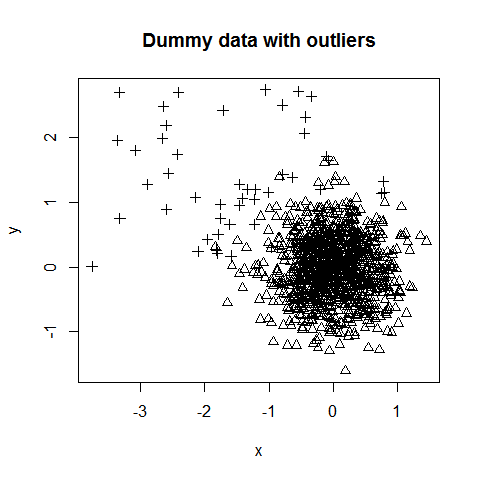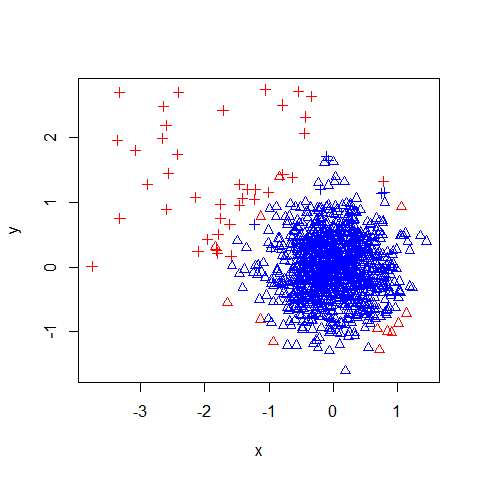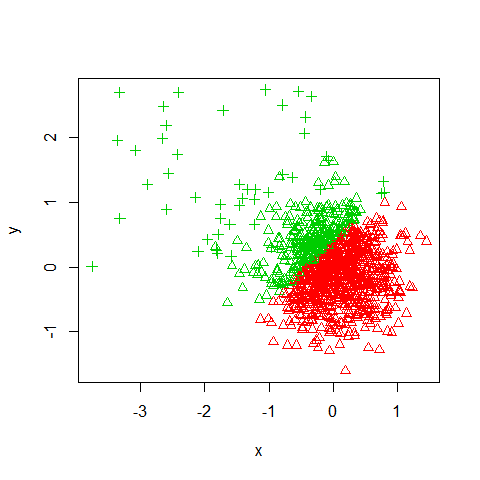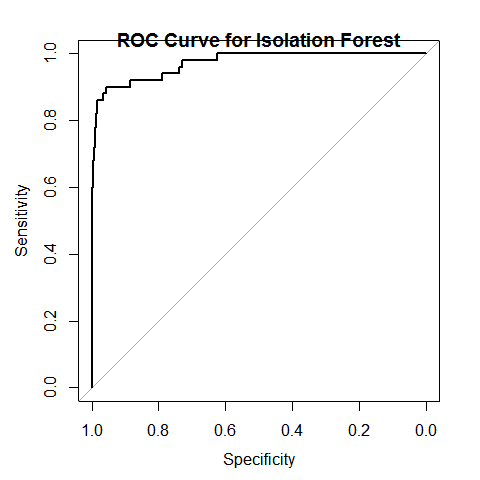brew install llvm
And then edit your ~/.R/Makevars file to look like so:
CXX = /usr/local/opt/llvm/bin/clang
CXXFLAGS = -I/usr/local/opt/llvm/include -fopenmp
LDFLAGS = -L/usr/local/opt/llvm/lib -fopenmp=libiomp5
An Isolation Forest is an ensemble of completely random decision trees. At each split a random feature and a random split point is chosen. Anomalies are isolated if they end up in a partition far away from the rest of the data. In decision tree terms, this corresponds to a record that has a short "path length". The path length is the number of nodes that a record passes through before terminating in a leaf node. Records with short average path lengths through the entire ensemble are considered anomalies.
Describing the location of a country home takes many fewer directions than describing the location of a brownstone in Brooklyn. The country home might be described as "the only house on the south shore of Lake Woebegon". While directions to the brownstone must be qualified with much more detail: "Go north on 5th Street for 12 blocks, take a left on Van Buren, etc.."
| Isolated | Dense |
|---|---|
 |
 |
The country house in this example is a literal outlier. It is off by itself away from most other homes. Similarly, records that can be described succinctly are also outliers.
Here we create two random, normal vectors and add some outliers. The majority of the data points are centered around (0, 0) with a standard deviation of 1/2. 50 outliers are introduced and are centered around (-1.5, 1.5) with a standard deviation of 1. This is to encourage some co-mingling of outliers with the bulk of the data.
N = 1e3
x = c(rnorm(N, 0, 0.5), rnorm(N*0.05, -1.5, 1))
y = c(rnorm(N, 0, 0.5), rnorm(N*0.05, 1.5, 1))
ol = c(rep(0, N), rep(1, (0.05*N))) + 2
data = data.frame(x, y)
plot(data, pch=ol)
title("Dummy data with outliers")
The code below builds an Isolation Forest by passing in the dummy data, the number of trees requested (100) and the number of records to subsample for each tree (32). The records that exceed the 95% percentile of the anomaly score should flag the most anomalous records. By coloring such records as red and plotting the results the effectiveness of the Isolation Forest can be viewed.
mod = iForest(X = data, 100, 32)
p = predict(mod, data)
col = ifelse(p > quantile(p, 0.95), "red", "blue")
plot(x, y, col=col, pch=ol)
Knowing there are two populations, the Kmeans algorithm seems like a good fit for identifying the two clusters. However, we can see that it picks cluster centers that do not do a good job of separating the data.
km = kmeans(data, 2)
plot(x, y, col=km$cluster+1, pch=ol)
We can compare the accuracy of identifying outliers by comparing the confusion matrix for each classification.
table(iForest=p > quantile(p, 0.95), Actual=ol == 3)
## Actual
## iForest FALSE TRUE
## FALSE 987 10
## TRUE 13 40
table(KMeans=km$cluster == 1, Actual=ol == 3)
## Actual
## KMeans FALSE TRUE
## FALSE 282 49
## TRUE 718 1
r = pROC::roc(ol == 3, p)
plot(r)
##
## Call:
## roc.default(response = ol == 3, predictor = p)
##
## Data: p in 1000 controls (ol == 3 FALSE) < 50 cases (ol == 3 TRUE).
## Area under the curve: 0.9715
title("ROC Curve for Isolation Forest")



